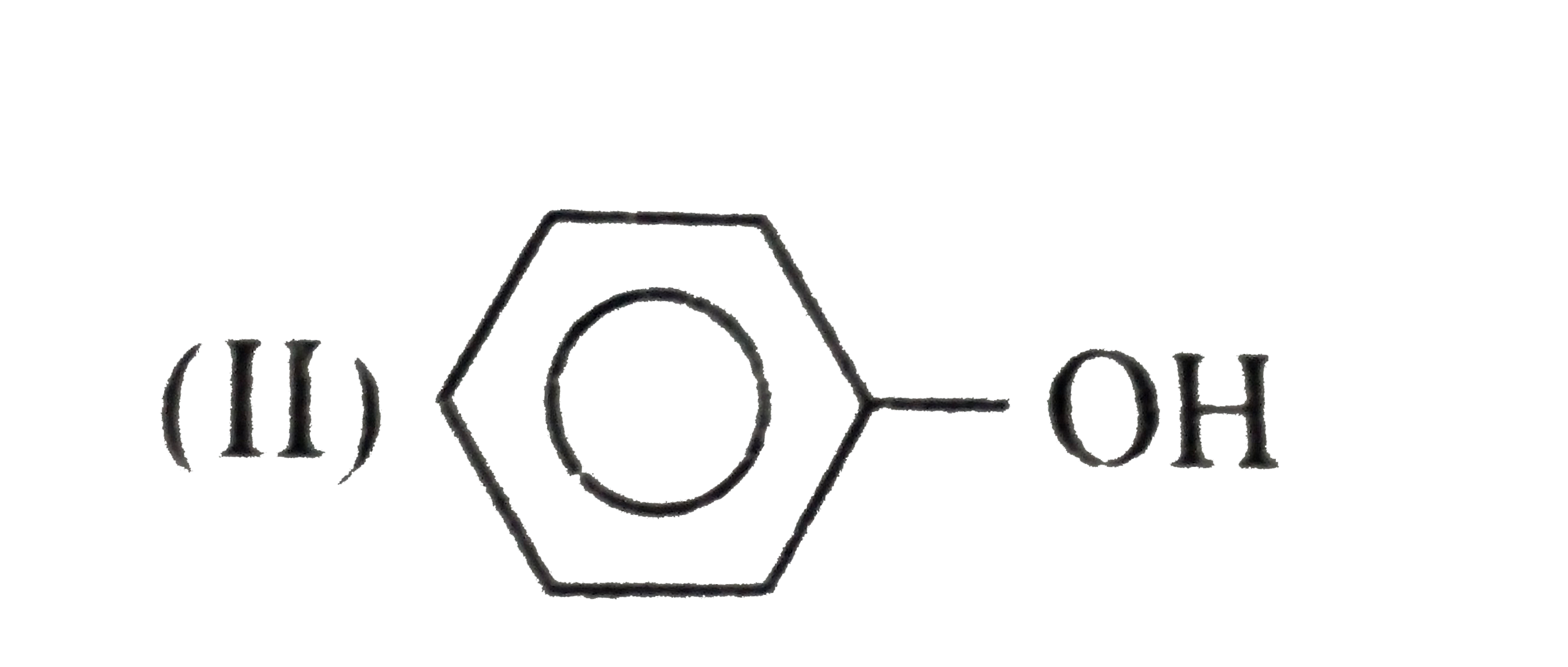The decreasing order of boiling points of the following is :
(I) RCOCl
(II) (RCO)2O
(III) RCONH2
(IV) RCOOH.
I>IV>II>III
III>II>IV>I
IV>III>I>II
II>I>III>IV
To determine the decreasing order of boiling points for the compounds given, we need to analyze the intermolecular forces and molecular masses of each compound. The compounds are:
1. RCOCl (Acid Chloride)
2. (RCO)2O (Acid Anhydride)
3. RCONH2 (Acid Amide)
4. RCOOH (Carboxylic Acid)
Step 1: Analyze Intermolecular Forces
- RCOCl (Acid Chloride): Acid chlorides do not have an acidic proton and thus do not participate in hydrogen bonding. They primarily exhibit dipole-dipole interactions and London dispersion forces.
- (RCO)2O (Acid Anhydride): Acid anhydrides can exhibit dipole-dipole interactions and some degree of hydrogen bonding, but they are not as strong as those in amides or carboxylic acids.
- RCONH2 (Acid Amide): Amides can form strong hydrogen bonds due to the presence of the NH group. This leads to stronger intermolecular forces compared to acid chlorides and anhydrides.
- RCOOH (Carboxylic Acid): Carboxylic acids can form strong hydrogen bonds due to the presence of both the -OH group and the carbonyl group. This results in very strong intermolecular forces.
Step 2: Compare Molecular Masses
While molecular mass can influence boiling points, the type of intermolecular forces is usually more significant. However, we should still consider that larger molecular mass can lead to higher boiling points due to increased Van der Waals forces.
Step 3: Establish the Order
Based on the analysis:
1. RCOOH (Carboxylic Acid): Strong hydrogen bonding leads to the highest boiling point.
2. RCONH2 (Acid Amide): Strong hydrogen bonding, but not as strong as in carboxylic acids.
3. (RCO)2O (Acid Anhydride): Moderate hydrogen bonding and dipole interactions.
4. RCOCl (Acid Chloride): Weakest intermolecular forces due to lack of hydrogen bonding.
Final Order
Thus, the decreasing order of boiling points is:
RCOOH > RCONH2 > (RCO)2O > RCOCl
2. (RCO)2O (Acid Anhydride)
3. RCONH2 (Acid Amide)
4. RCOOH (Carboxylic Acid)
- RCOCl (Acid Chloride): Acid chlorides do not have an acidic proton and thus do not participate in hydrogen bonding. They primarily exhibit dipole-dipole interactions and London dispersion forces.
- (RCO)2O (Acid Anhydride): Acid anhydrides can exhibit dipole-dipole interactions and some degree of hydrogen bonding, but they are not as strong as those in amides or carboxylic acids.
While molecular mass can influence boiling points, the type of intermolecular forces is usually more significant. However, we should still consider that larger molecular mass can lead to higher boiling points due to increased Van der Waals forces.
Based on the analysis:
2. RCONH2 (Acid Amide): Strong hydrogen bonding, but not as strong as in carboxylic acids.
3. (RCO)2O (Acid Anhydride): Moderate hydrogen bonding and dipole interactions.
4. RCOCl (Acid Chloride): Weakest intermolecular forces due to lack of hydrogen bonding.
Thus, the decreasing order of boiling points is:
RCOOH > RCONH2 > (RCO)2O > RCOCl
Topper's Solved these Questions
- GENERAL ORGANIC CHEMISTRYBOOK - CENGAGE CHEMISTRY ENGLISHCHAPTER - GENERAL ORGANIC CHEMISTRYEXERCISE - Assertion-Reasoning
5 Videos
- GENERAL ORGANIC CHEMISTRYBOOK - CENGAGE CHEMISTRY ENGLISHCHAPTER - GENERAL ORGANIC CHEMISTRYEXERCISE - Archives
12 Videos
- GENERAL ORGANIC CHEMISTRYBOOK - CENGAGE CHEMISTRY ENGLISHCHAPTER - GENERAL ORGANIC CHEMISTRYEXERCISE - Multiple Correct
22 Videos
- CLASSIFICATION AND NOMENCLATURE OF ORGANIC COMPOUNDSBOOK - CENGAGE CHEMISTRY ENGLISHCHAPTER - CLASSIFICATION AND NOMENCLATURE OF ORGANIC COMPOUNDSEXERCISE - Analytical and Descriptive Type
3 Videos
- HYDROGEN, WATER AND HYDROGEN PEROXIDEBOOK - CENGAGE CHEMISTRY ENGLISHCHAPTER - HYDROGEN, WATER AND HYDROGEN PEROXIDEEXERCISE - Subjective Archive (Subjective)
3 Videos
Similar Questions
Knowledge Check
The decreasing order of boiling points of the following hydrides is
ASbH3>AsH3>PH3>NH3BNH3>SbH3>AsH3>PH3CSbH3>NH3>AsH3>PH3DPH3>AsH3>SbH3>NH3The decreasing order of boiling points of the following alcohols is
A3-methylbutan-2-ol > 2 - methylbutan-2-ol > pentan-1-olBpentan-1-ol > 3- methylbutan-2-olC2-methylbutan-2-ol > 3-methylbutan-2-ol > pentan-1-olD2-methylbutan -2-ol < pentan -1-ol < 3-mehtylbutan-2-ol
The decreasing order of acidic character of the following is:
(I) (II)
(II) 
(III) (IV)
(IV) 
View SolutionThe decreasing order of acidic character of the following is :
(I) CH3SH
(II) CH3OH
(III) H2O
(IV) EtOH.
View SolutionDecreasing order of melting point of compound I-IV follows:

View SolutionThe decreasing order of ease of hydrolysis of the following esters is :
(I) MeCOOPh
(II)
(III)
(IV) .
.
View SolutionThe decreasing order of the basic character of the following is :
(I) FӨ
(II) NOӨ3
(III) H2O
(IV) CH3OH.
View SolutionThe decreasing order of−I effect of the following is :
(I) CHO
(II) F
(III) OR
(IV) NH2
(V) OH
(VI) Ph.
View Solution


